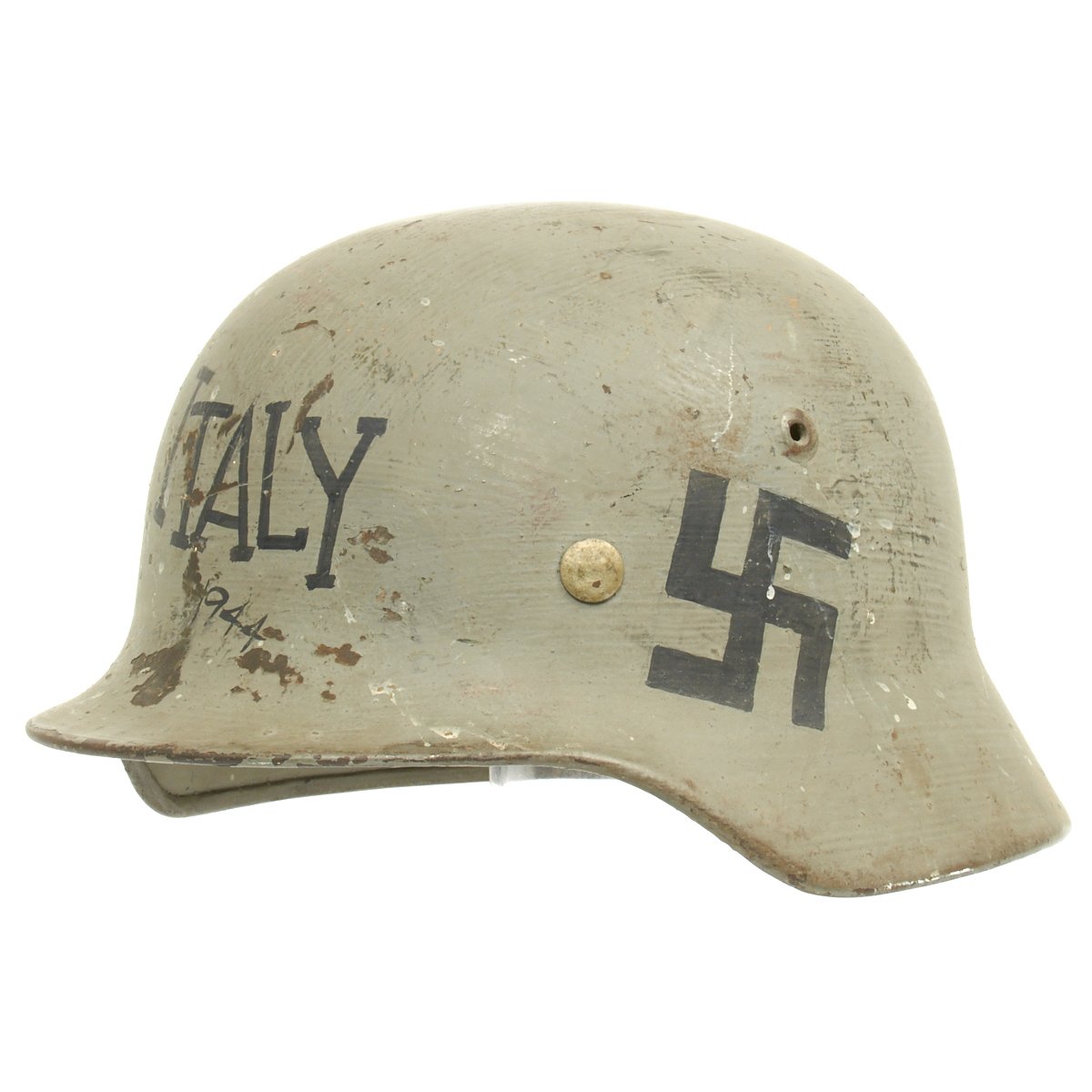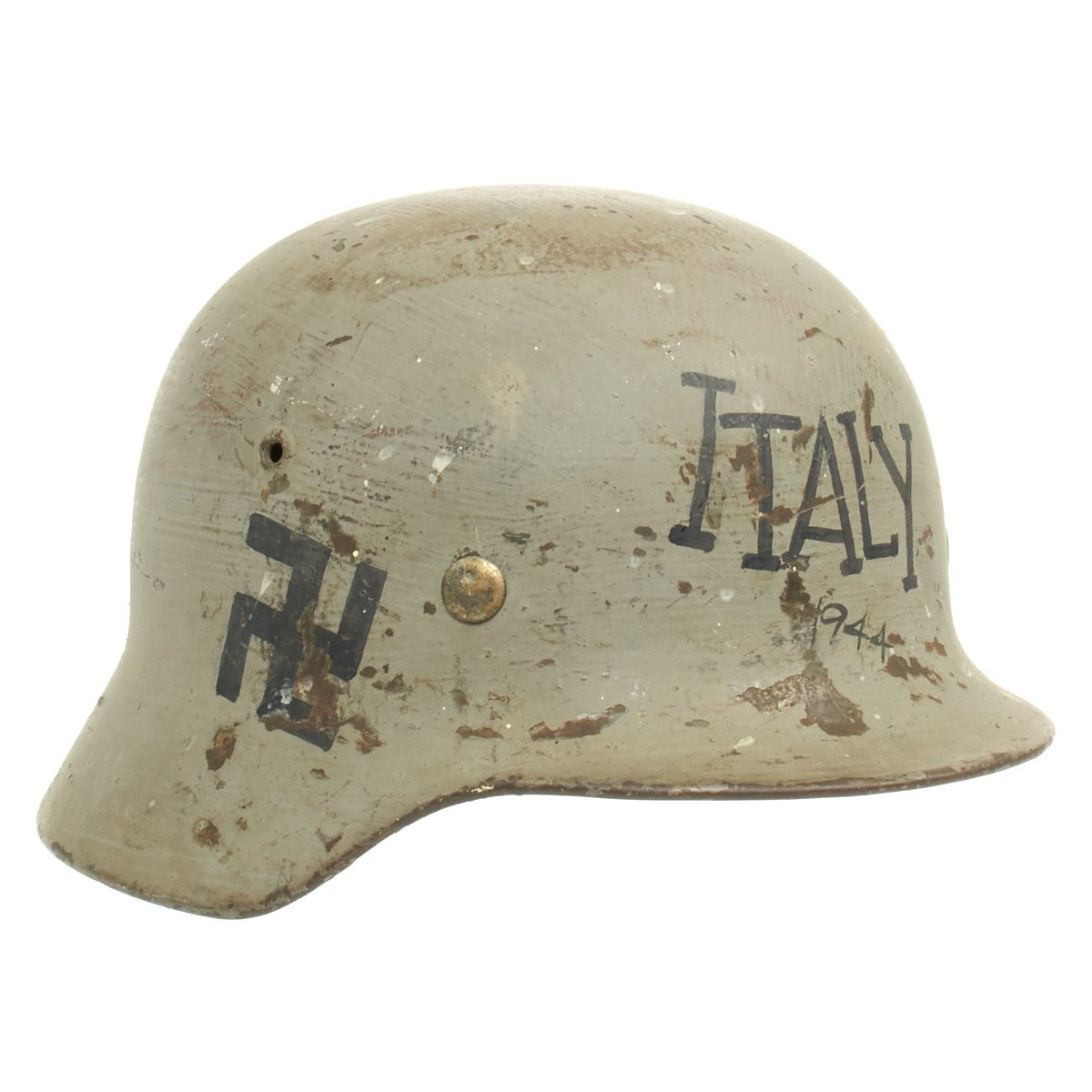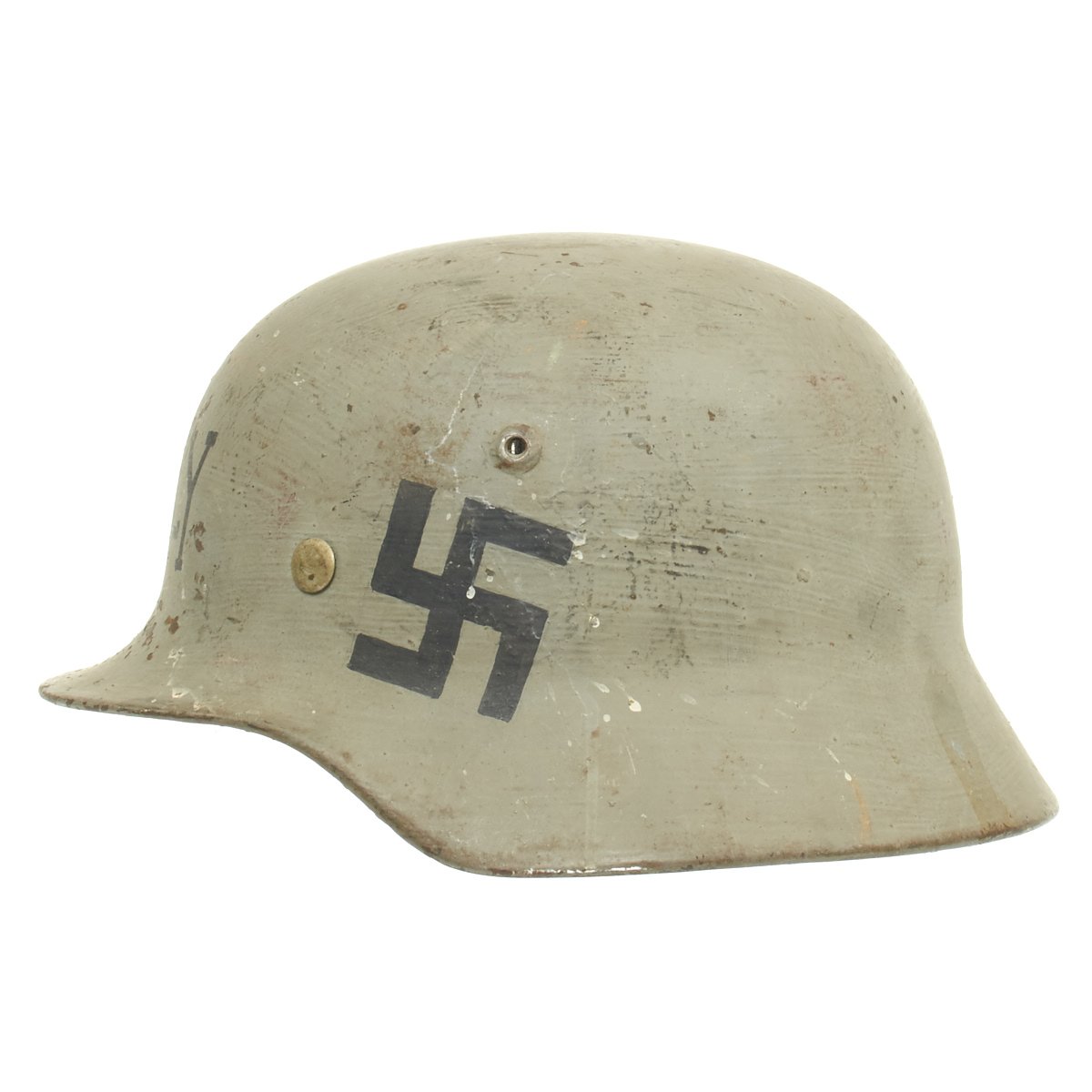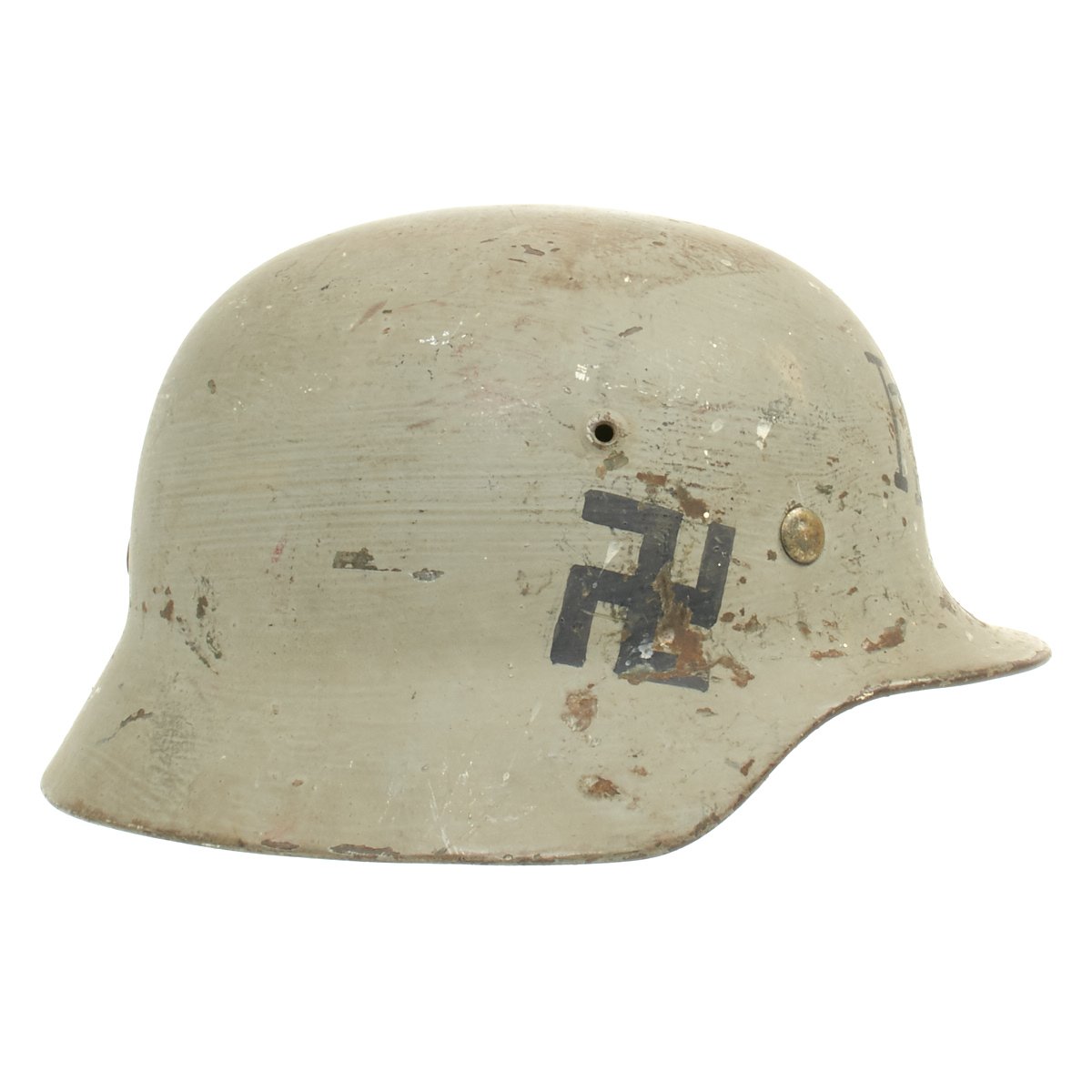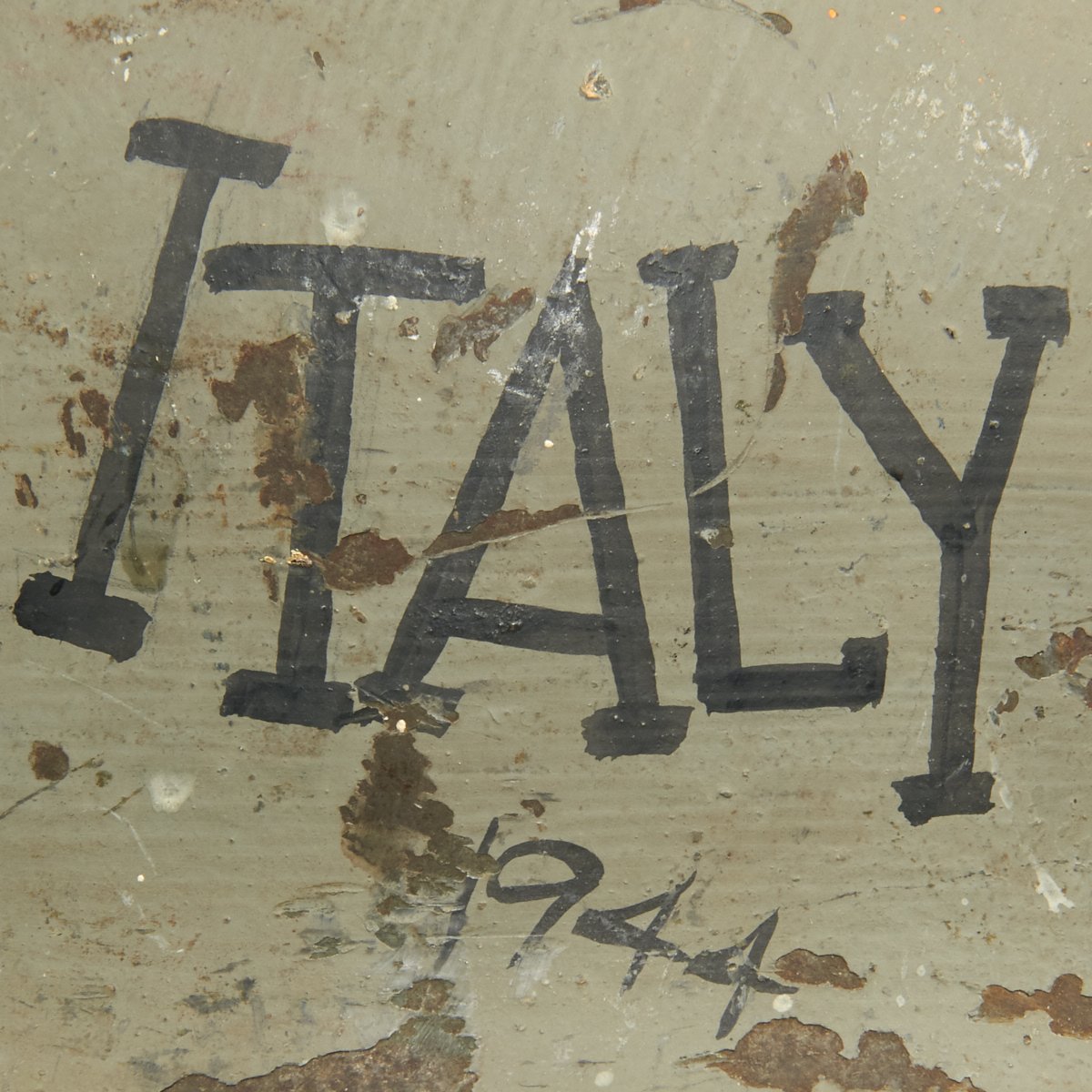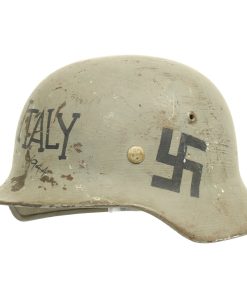Original German WWII M35 Helmet 1944 Italy Anzio Campaign USGI Bring Back War Trophy Original Items
$ 695,00 $ 208,50
Original Item: One-of-a-kind. This is a fantastic US WW2 Veteran Bring Back Helmet. The helmet is an excellent condition German M35 complete with an original liner. The manufacturer and size stamped is concealed by the paint but helmet appears to be a shell size 64.
The helmet is painted in period grey paint with black swass and the front of the helmet is painted in period black paint that reads:
The success of an amphibious landing at that location, in a basin consisting substantially of reclaimed marshland and surrounded by mountains, depended on the element of surprise and the swiftness with which the invaders could build up strength and move inland relative to the reaction time and strength of the defenders. Any delay could result in the occupation of the mountains by the defenders and the consequent entrapment of the invaders. Lieutenant General Mark W. Clark, commander of the U.S. Fifth Army, understood that risk, but Clark did not pass on his appreciation of the situation to his subordinate,[citation needed] Lucas, who preferred to take time to entrench against an expected counterattack. The initial landing achieved complete surprise with no opposition and a jeep patrol even made it as far as the outskirts of Rome. However, Lucas, who had little confidence in the operation as planned, failed to capitalize on the element of surprise and delayed his advance until he judged his position was sufficiently consolidated and he had sufficient strength.
While Lucas consolidated, Field Marshal Albert Kesselring, the German commander in the Italian theatre, moved every unit he could spare into a defensive ring around the beachhead. His artillery units had a clear view of every Allied position. The Germans also stopped the drainage pumps and flooded the reclaimed marsh with salt water, planning to entrap the Allies and destroy them by epidemic. For weeks a rain of shells fell on the beach, the marsh, the harbour, and on anything else observable from the hills, with little distinction between forward and rear positions.
After a month of heavy but inconclusive fighting, Lucas was relieved and sent home. His replacement was Major General Lucian K. Truscott, who had previously commanded the U.S. 3rd Infantry Division. The Allies broke out in May. But, instead of striking inland to cut lines of communication of the German Tenth Army’s units fighting at Monte Cassino, Truscott, on Clark’s orders, reluctantly turned his forces north-west towards Rome, which was captured on June 4, 1944. As a result, the forces of the German Tenth Army fighting at Cassino were able to withdraw and rejoin the rest of Kesselring’s forces north of Rome, regroup, and make a fighting withdrawal to his next major prepared defensive position on the Gothic Line.
Fast Shipping with Professional Packaging
Thanks to our longstanding association with UPS FedEx DHL, and other major international carriers, we are able to provide a range of shipping options. Our warehouse staff is expertly trained and will wrap your products according to our exact and precise specifications. Prior to shipping, your goods will be thoroughly examined and securely secured. We ship to thousands clients each day across multiple countries. This shows how we're dedicated to be the largest retailer on the internet. Warehouses and distribution centres can be located throughout Europe as well as the USA.
Note: Orders with more than one item will be assigned a processing date depending on the item.
Before shipping before shipping, we'll conduct a thorough inspection of the items you have ordered. Today, the majority of orders will be delivered within 48 hours. The delivery time will be between 3-7 days.
Returns
The stock is dynamic and we cannot completely manage it because multiple stakeholders are involved, including our factory and warehouse. So the actual stock may alter at any time. It's possible that you may not receive your order once the order has been made.
Our policy is valid for a period of 30 days. If you don't receive the product within 30 days, we are not able to issue a refund or an exchange.
You can only return an item if it is unused and in the same state as the day you received it. You must have the item in its original packaging.
Related products
Uncategorized
Uncategorized
Uncategorized
Uncategorized
Australian WWII Owen MK1 Machine Carbine SMG Custom Fabricated Replica with Sling Original Items
Uncategorized
Uncategorized
Armoured Fighting Vehicles of the World: AFVs of World War One (Hardcover Book) New Made Items
Uncategorized
Uncategorized
Uncategorized
Uncategorized
Armored Burgonet Helmet & Polearm from Scottish Castle Leith Hall Circa 1700 Original Items
Uncategorized
Uncategorized
Uncategorized
